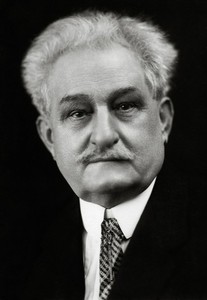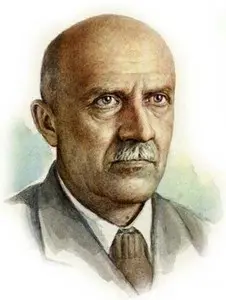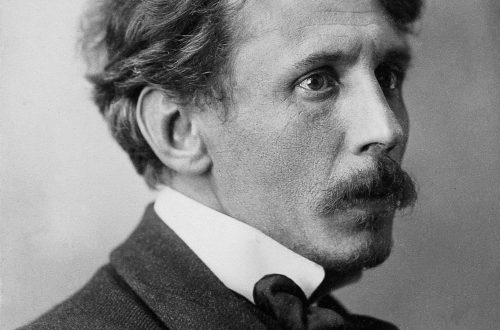
Leoš Janáček |
Leoš Janacek

L. Janacek occupies in the history of Czech music of the XX century. the same place of honor as in the XNUMXth century. – his compatriots B. Smetana and A. Dvorak. It was these major national composers, the creators of the Czech classics, who brought the art of this most musical people to the world stage. The Czech musicologist J. Sheda sketched the following portrait of Janáček, as he remained in the memory of his compatriots: “…Hot, quick-tempered, principled, sharp, absent-minded, with unexpected mood swings. He was small in stature, stocky, with an expressive head, with thick hair lying on his head in disorderly strands, with frowning eyebrows and sparkling eyes. No attempts at elegance, nothing outward. He was full of life and impulse stubborn. Such is his music: full-blooded, concise, changeable, like life itself, healthy, sensual, hot, captivating.”
Janáček belonged to a generation that lived in an oppressed country (which had long been dependent on the Austrian Empire) in the reactionary era, shortly after the suppression of the national liberation revolution of 1848. Could this be the reason for his constant deep sympathy for the oppressed and suffering, his passionate, irrepressible rebellion ? The composer was born in the land of dense forests and ancient castles, in the small mountain village of Hukvaldy. He was the ninth of 14 children of a high school teacher. His father, among other subjects, taught music, was a violinist, church organist, leader and conductor of a choral society. Mother also possessed outstanding musical abilities and knowledge. She played the guitar, sang well, and after the death of her husband, she performed the part of the Organ in the local church. The childhood of the future composer was poor, but healthy and free. He forever retained his spiritual closeness to nature, respect and love for the Moravian peasants, who were brought up in him from an early age.
Only until the age of 11 did Leosh live under his parental roof. His musical abilities and sonorous treble decided the question of where to define the child. His father took him to Brno to Pavel Krzhizhkovek, a Moravian composer and collector of folklore. Leos was accepted into the church choir of the Starobrnensky Augustinian monastery. The chorister boys lived at the monastery at the state expense, attended a comprehensive school and took musical disciplines under the guidance of strict monk mentors. Krzhizhkovsky himself took care of the composition with Leos. Memories of life in the Starobrnensky Monastery are reflected in many of Janáček’s works (the cantatas Amarus and The Eternal Gospel; the sextet Youth; the piano cycles In the Darkness, Along the Overgrown Path, etc.). The atmosphere of high and ancient Moravian culture, realized in those years, was embodied in one of the peaks of the composer’s work – the Glagolitic Mass (1926). Subsequently, Janacek completed the course of the Prague Organ School, improved at the Leipzig and Vienna Conservatories, but with all the deep professional foundation, in the main business of his life and work, he did not have a real great leader. Everything that he achieved was not won thanks to school and highly experienced advisers, but completely independently, through difficult searches, sometimes by trial and error. From the first steps in the independent field, Janáček was not just a musician, but also a teacher, folklorist, conductor, music critic, theorist, organizer of philharmonic concerts and the Organ School in Brno, a musical newspaper and a circle for the study of the Russian language. For many years the composer worked and fought in provincial obscurity. The Prague professional environment did not recognize him for a long time, only Dvorak appreciated and loved his younger colleague. At the same time, late Romantic art, which had taken root in the capital, was alien to the Moravian master, who relied on folk art and on the intonations of lively sounding speech. Since 1886, the composer, together with the ethnographer F. Bartosz, spent every summer on folklore expeditions. He published many recordings of Moravian folk songs, created their concert arrangements, choral and solo. The highest achievement here was the symphonic Lash Dances (1889). Simultaneously with them, the famous collection of folk songs (over 2000) was published with a preface by Janáček “On the Musical Side of Moravian Folk Songs”, which is now considered a classic work in folklore.
In the field of opera, Janáček’s development was longer and more difficult. After a single attempt at composing a late-romantic opera based on a plot from a Czech epic (Sharka, 1887), he decided to write the ethnographic ballet Rakos Rakoci (1890) and an opera (The Beginning of the Novel, 1891), in which folk songs and dancing. The ballet was even staged in Prague during the Ethnographic Exhibition of 1895. The ethnographic nature of these works was a temporary stage in the work of Janáček. The composer followed the path of creating great truthful art. He was driven by the desire to oppose abstractions – vitality, antiquity – today, a fictional legendary setting – the concreteness of folk life, generalized hero-symbols – ordinary people with hot human blood. This was achieved only in the third opera “Her stepdaughter” (“Enufa” based on the drama by G. Preissova, 1894-1903). There are no direct quotations in this opera, although the whole of it is a bunch of stylistic features and signs, rhythms and intonations of Moravian songs, folk speech. The opera was rejected by the Prague National Theatre, and it took 13 years of struggle for the magnificent work, which is now playing in theaters around the world, to finally penetrate the capital’s stage. In 1916, the opera was a resounding success in Prague, and in 1918 in Vienna, which opened the path to world fame for the unknown 64-year-old Moravian master. By the time Her Stepdaughter is completed, Janacek enters the time of full creative maturity. At the beginning of the XX century. Janacek clearly shows socially critical tendencies. He is strongly influenced by Russian literature – Gogol, Tolstoy, Ostrovsky. He writes the piano sonata “From the Street” and marks it with the date October 1, 1905, when Austrian soldiers dispersed a youth demonstration in Brno, and then tragic choirs at the station. working poet Pyotr Bezruch “Kantor Galfar”, “Marichka Magdonova”, “70000” (1906). Particularly dramatic is the choir “Marichka Magdonova” about a perishing but unsubdued girl, which always evoked a stormy reaction from the audience. When the composer, after one of the performances of this work, was told: “Yes, this is a real meeting of socialists!” He replied, “That’s exactly what I wanted.”
By the same time, the first drafts of the symphonic rhapsody “Taras Bulba”, completely completed by the composer at the height of the First World War, when the government of Austria-Hungary drove Czech soldiers to fight against the Russians, belong to the same time. It is significant that in his domestic literature Janáček finds material for social criticism (from the choirs at the station of P. Bezruch to the satirical opera The Adventures of Pan Broucek based on the stories of S. Cech), and in longing for a heroic image he turns to Gogol.
The last decade of the composer’s life and work (1918-28) is clearly limited by the historical milestone of 1918 (the end of the war, the end of the three-hundred-year Austrian yoke) and at the same time by a turn in Janáček’s personal fate, the beginning of his world fame. During this period of his work, which can be called lyric-philosophical, the most lyrical of his operas, Katya Kabanova (based on Ostrovsky’s Thunderstorm, 1919-21), was created. a poetic philosophical fairy tale for adults – “The Adventures of the Cunning Fox” (based on the short story by R. Tesnoglidek, 1921-23), as well as the opera “Makropulos’ Remedy” (based on the play of the same name by K. Capek, 1925) and “From the Dead House” (based on ” Notes from the Dead House” by F. Dostoevsky, 1927-28). In the same incredibly fruitful decade, the magnificent “Glagolic Mass”, 2 original vocal cycles (“Diary of a Disappeared” and “Jests”), the wonderful choir “Mad Tramp” (by R. Tagore) and the widely popular Sinfonietta for brass band appeared. In addition, there are numerous choral and chamber-instrumental compositions, including 2 quartets. As B. Asafiev once said about these works, Janachek seemed to grow younger with each of them.
Death overtook Janacek unexpectedly: during a summer holiday in Hukvaldy, he caught a cold and died of pneumonia. They buried him in Brno. The cathedral of the Starobrnensky monastery, where he studied and sang in the choir as a boy, was overflowing with crowds of excited people. It seemed incredible that the one over whom the years and senile ailments seemed to have no power was gone.
Contemporaries did not fully understand that Janáček was one of the founders of musical thinking and musical psychology of the XNUMXth century. His speech with a strong local accent seemed too bold for aesthetes, original creations, philosophical views and theoretical thinking of a true innovator were perceived as a curiosity. During his lifetime, he gained a reputation as a half-educated, primitive, small-town folklorist. Only the new experience of modern man by the end of the century opened our eyes to the personality of this brilliant artist, and a new explosion of interest in his work began. Now the straightforwardness of his view of the world does not need softening, the sharpness of the sound of his chords does not require polishing. Modern man sees in Janacek his comrade-in-arms, herald of the universal principles of progress, humanism, careful respect for the laws of nature.
L. Polyakova





